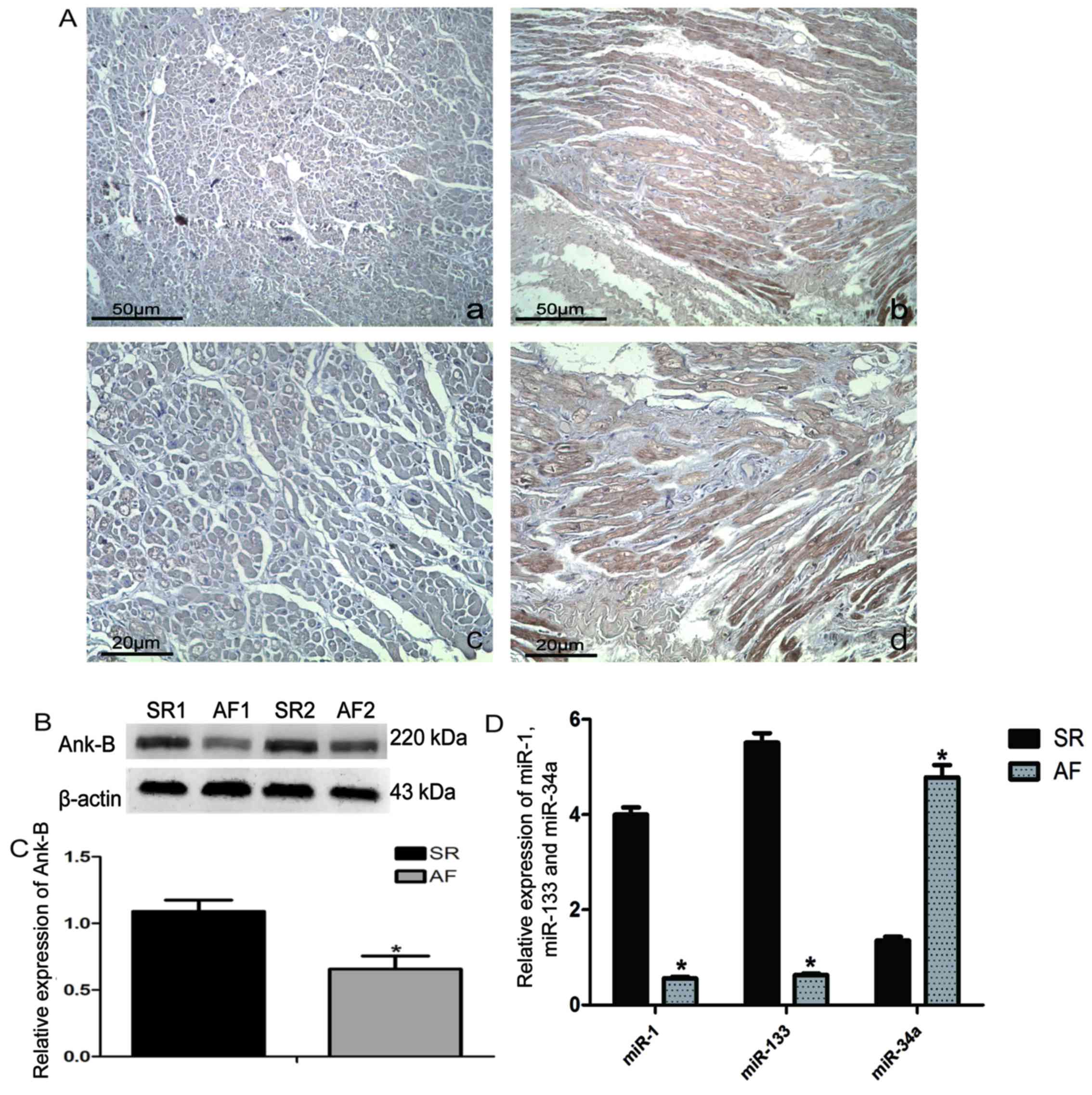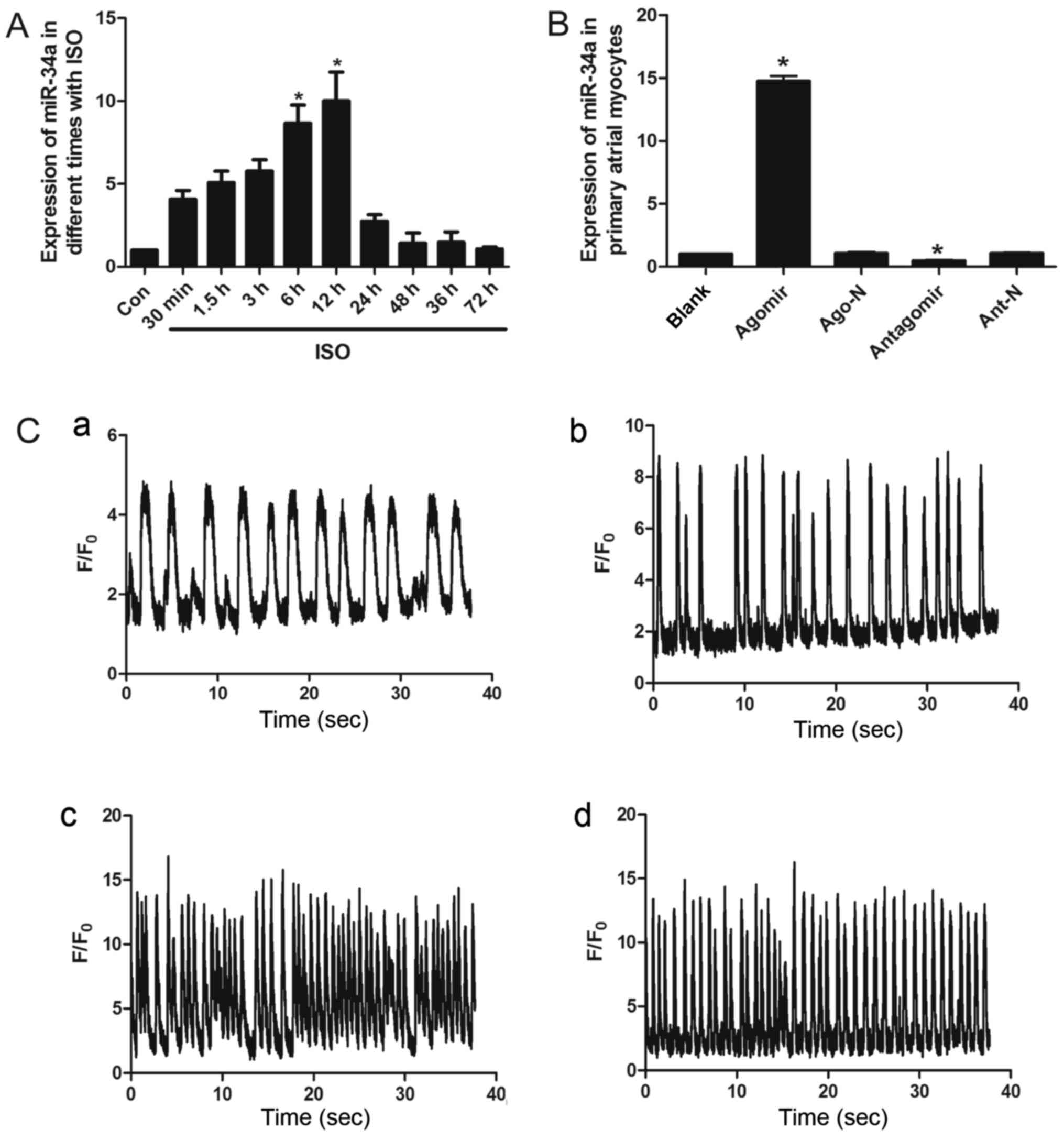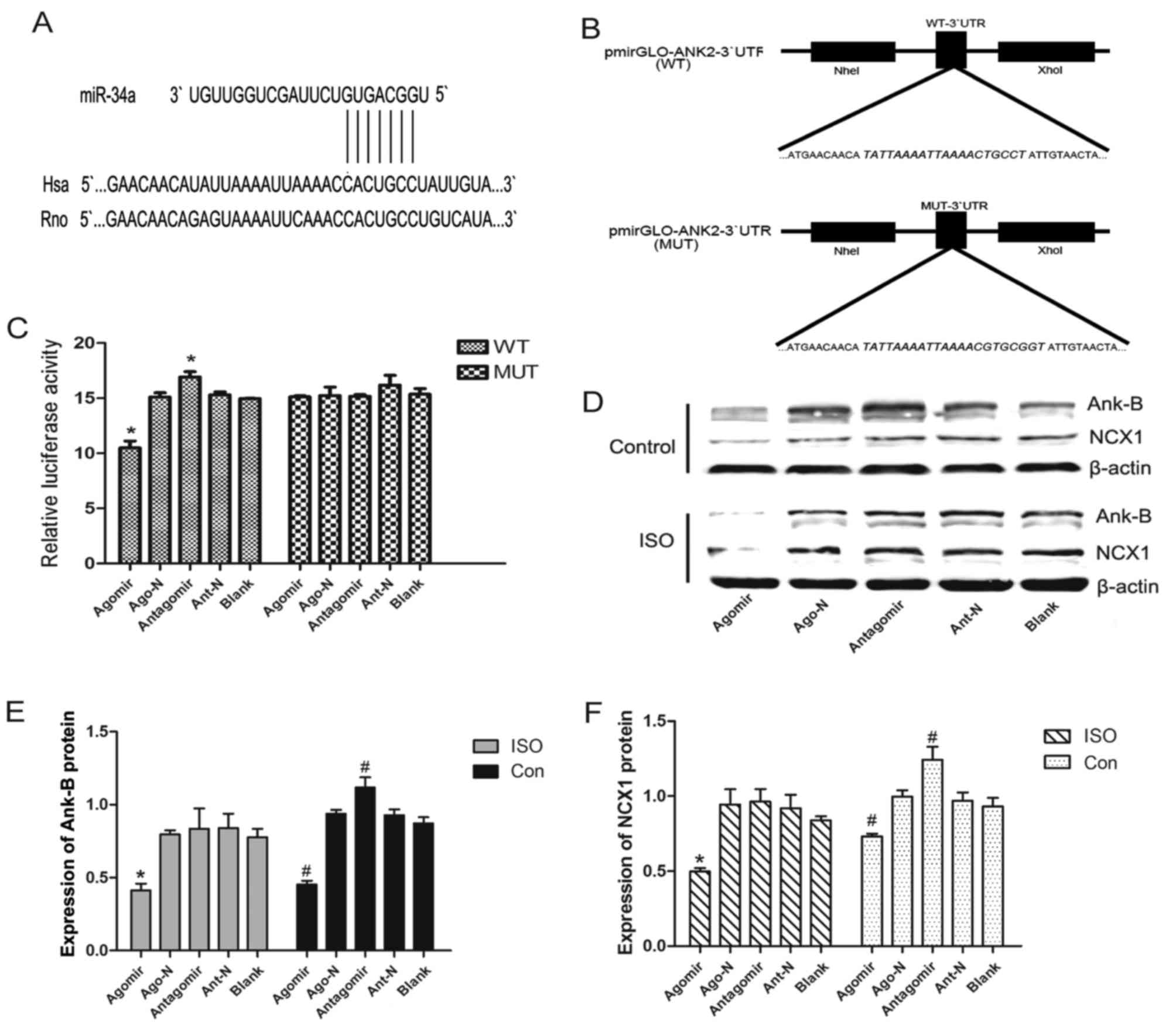|
1
|
Heijman J, Guichard JB, Dobrev D and
Nattel S: Translational challenges in atrial fibrillation. Circ
Res. 122:752–773. 2018. View Article : Google Scholar : PubMed/NCBI
|
|
2
|
Miyasaka Y, Barnes ME, Gersh BJ, Cha SS,
Bailey KR, Abhayaratna WP, Seward JB and Tsang TS: Secular trends
in incidence of atrial fibrillation in Olmsted County, Minnesota,
1980 to 2000 and implications on the projections for future
prevalence. Circulation. 114:119–125. 2006. View Article : Google Scholar : PubMed/NCBI
|
|
3
|
Dobrev D and Nattel S: New antiarrhythmic
drugs for treatment of atrial fibrillation. Lancet. 375:1212–1223.
2010. View Article : Google Scholar : PubMed/NCBI
|
|
4
|
Iwasaki YK, Nishida K, Kato T and Nattel
S: Atrial fibrillation pathophysiology: Implications for
management. Circulation. 124:2264–2274. 2011. View Article : Google Scholar : PubMed/NCBI
|
|
5
|
Kashef F, Li J, Wright P, Snyder J,
Suliman F, Kilic A, Higgins RS, Anderson ME, Binkley PF, Hund TJ
and Mohler PJ: Ankyrin-B protein in heart failure: Identification
of a new component of metazoan cardioprotection. J Biol Chem.
287:30268–30281. 2012. View Article : Google Scholar : PubMed/NCBI
|
|
6
|
Peter J, Mohler JQD and Bennett V:
Ankyrin-B coordinates the Na/K ATPase, Na/Ca exchanger and
insP3Receptor in a cardiac T-Tubule/SR microdomain. PLoS Biol.
3:e4232005. View Article : Google Scholar : PubMed/NCBI
|
|
7
|
Li J, Kline CF, Hund TJ, Anderson ME and
Mohler PJ: Ankyrin-B regulates Kir6.2 membrane expression and
function in heart. J Biol Chem. 285:28723–28730. 2010. View Article : Google Scholar : PubMed/NCBI
|
|
8
|
Schulze DH, Muqhal M, Lederer WJ and
Ruknudin AM: Sodium/calcium exchanger (NCX1) macromolecular
complex. J Biol Chem. 278:28849–28855. 2003. View Article : Google Scholar : PubMed/NCBI
|
|
9
|
Mohler TJ and Ha PJ: Ankyrin-based
targeting pathway regulates human sinoatrial node automaticity.
Channels (Austin). 2:404–406. 2008. View Article : Google Scholar : PubMed/NCBI
|
|
10
|
Small EM and Olson EN: Pervasive roles of
microRNAs in cardiovascular biology. Nature. 469:336–342. 2011.
View Article : Google Scholar : PubMed/NCBI
|
|
11
|
Care A, Catalucci D, Felicetti F, Bonci D,
Addario A, Gallo P, Bang ML, Segnalini P, Gu Y, Dalton ND, et al:
MicroRNA-133 controls cardiac hypertrophy. Nat Med. 13:613–618.
2007. View
Article : Google Scholar : PubMed/NCBI
|
|
12
|
Boon RA, Iekushi K, Lechner S, Seeger T,
Fischer A, Heydt S, Kaluza D, Tréguer K, Carmona G, Bonauer A, et
al: MicroRNA-34a regulates cardiac ageing and function. Nature.
495:107–110. 2013. View Article : Google Scholar : PubMed/NCBI
|
|
13
|
Bernardo BC, Gao XM, Winbanks CE, Boey EJ,
Tham YK, Kiriazis H, Gregorevic P, Obad S, Kauppinen S, Du XJ, et
al: Therapeutic inhibition of the miR-34 family attenuates
pathological cardiac remodeling and improves heart function. Proc
Natl Acad Sci USA. 109:17615–17620. 2012. View Article : Google Scholar : PubMed/NCBI
|
|
14
|
Livak KJ and Schmittgen TD: Analysis of
relative gene expression data using real-time quantitative PCR and
the 2(-Delta Delta C(T)) method. Methods. 25:402–408. 2001.
View Article : Google Scholar : PubMed/NCBI
|
|
15
|
Chen CL, Lin JL, Lai LP, Pan CH, Huang SK
and Lin CS: Altered expression of FHL1, CARP, TSC-22 and P311
provide insights into complex transcriptional regulation in
pacing-induced atrial fibrillation. Biochim Biophys Acta.
1772:317–329. 2007. View Article : Google Scholar : PubMed/NCBI
|
|
16
|
Mohler PJ, Splawski I, Napolitano C,
Bottelli G, Sharpe L, Timothy K, Priori SG, Keating MT and Bennett
V: A cardiac arrhythmia syndrome caused by loss of ankyrin-B
function. Proc Natl Acad Sci USA. 101:9137–9142. 2004. View Article : Google Scholar : PubMed/NCBI
|
|
17
|
Terentyev D, Belevych AE, Terentyeva R,
Martin MM, Malana GE, Kuhn DE, Abdellatif M, Feldman DS, Elton TS
and Györke S: miR-1 overexpression enhances Ca(2+) release and
promotes cardiac arrhythmogenesis by targeting PP2A regulatory
subunit B56alpha and causing CaMKII-dependent hyperphosphorylation
of RyR2. Circ Res. 104:514–521. 2009. View Article : Google Scholar : PubMed/NCBI
|
|
18
|
Tao H, Shi KH, Yang JJ, Huang C, Liu LP
and Li J: Epigenetic regulation of cardiac fibrosis. Cell Signal.
25:1932–1938. 2013. View Article : Google Scholar : PubMed/NCBI
|
|
19
|
Song LS, Wang SQ, Xiao RP, Spurgeon H,
Lakatta EG and Cheng H: Beta-adrenergic stimulation synchronizes
intracellular Ca(2+) release during excitation-contraction coupling
in cardiac myocytes. Circ Res. 88:794–801. 2001. View Article : Google Scholar : PubMed/NCBI
|
|
20
|
Pang H, Ronderos R, Pérez-Riera AR,
Femenía F and Baranchuk A: Reverse atrial electrical remodeling A
systematic review. Cardiol J. 18:625–631. 2011. View Article : Google Scholar : PubMed/NCBI
|
|
21
|
Verheule S, Tuyls E, Gharaviri A, Hulsmans
S, van Hunnik A, Kuiper M, Serroyen J, Zeemering S, Kuijpers NH and
Schotten U: Loss of continuity in the thin epicardial layer because
of endomysial fibrosis increases the complexity of atrial
fibrillatory conduction. Circ Arrhythm Electrophysiol. 6:202–211.
2013. View Article : Google Scholar : PubMed/NCBI
|
|
22
|
Le Scouarnec S, Bhasin N, Vieyres C, Hund
TJ, Cunha SR, Koval O, Marionneau C, Chen B, Wu Y, Demolombe S, et
al: Dysfunction in ankyrin-B-dependent ion channel and transporter
targeting causes human sinus node disease. Proc Natl Acad Sci USA.
105:15617–15622. 2008. View Article : Google Scholar : PubMed/NCBI
|
|
23
|
Cunha SR, Hund TJ, Hashemi S, Voigt N, Li
N, Wright P, Koval O, Li J, Gudmundsson H, Gumina RJ, et al:
Defects in ankyrin-based membrane protein targeting pathways
underlie atrial fibrillation. Circulation. 124:1212–1222. 2011.
View Article : Google Scholar : PubMed/NCBI
|
|
24
|
Ono K, Kuwabara Y and Han J: MicroRNAs and
cardiovascular diseases. FEBS J. 278:1619–1633. 2011. View Article : Google Scholar : PubMed/NCBI
|
|
25
|
Hund TJ, Wright PJ, Dun W, Snyder JS,
Boyden PA and Mohler PJ: Regulation of the ankyrin-B-based
targeting pathway following myocardial infarction. Cardiovasc Res.
81:742–749. 2009. View Article : Google Scholar : PubMed/NCBI
|












